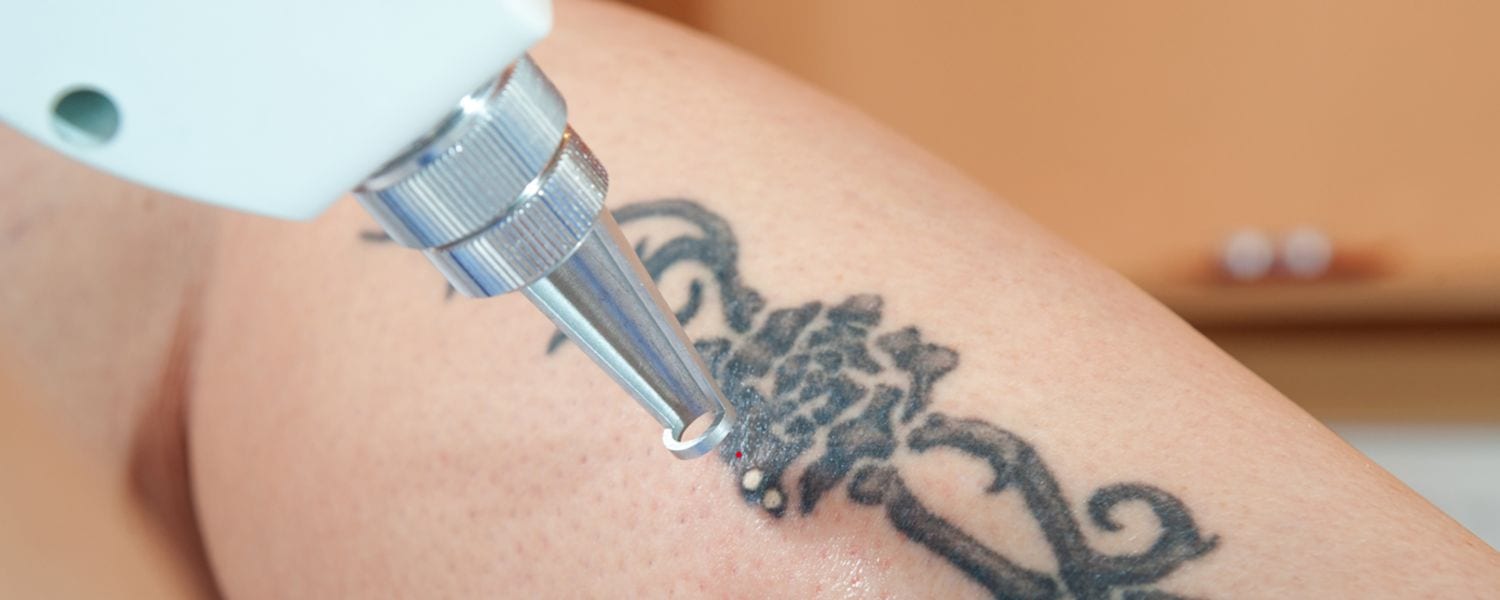Table of Contents
How does laser tattoo removal work?
Each pulse of the laser sends light energy into your skin. We use different wavelengths of laser light to treat different colors of ink in your tattoo. As the light energy is directed into your skin, it is selectively absorbed by the tattoo ink particles trapped in the dermis of your skin. When the ink particles absorb this energy, they instantly shatter into tiny fragments. Once the laser has broken the ink into smaller pieces, your body’s immune system works to remove the ink over the following weeks, flushing it away from the tattooed area. We see the result of this as the tattoo lightening in appearance. Each additional laser treatment breaks down more and more ink until the tattoo can no longer be seen.
This description achieves a few things:
It gives a basic understanding of the tattoo removal process
It describes the roles that both the laser and the immune system have in achieving results
It discusses how you customize the treatment based on their unique tattoo
It explains why it takes time for the ink removal to occur
How many sessions do I need to remove my tattoo?
The number of sessions vary from person to person. Other things that can affect the number of sessions is the age of the tattoo, the in colours, and the type of ink used. On average you are looking at 8-10 sessions for laser tattoo removal. We also offer non-laser tattoo removal for small tattoos that take about 50% fewer sessions than laser.
How much does laser tattoo removal cost?
In general, it costs about ten times as much to get a tattoo removed as it costs to have it applied. Our tattoo removal pricing starts at $149 and up. The price is based on the size of your tattoo. Click here for the full pricing. We offer package of 3 at 15% discount and package of 5 at 25% discount.
Does laser tattoo removal leave a scar?
Understandably, anyone seeking out laser tattoo removal treatments wants their skin to look as close to their natural tone as possible. Your results depend on several factors. First, if there is any preexisting scarring from when the tattoo was done, which will remain after your laser tattoo removal is complete? The degree of this scarring ranges from severe to mild and often affects the skin’s texture more than its appearance. If you’re unsure if your tattoo has any current scarring, you can ask your licensed medical laser technician at your consultation appointment.
The second factor that determines whether or not you will experience scarring is what kind of laser is used. Older laser technology would often remove the skin’s pigment along with the tattoo ink, but things have changed. Using a Q-switched laser will ensure that neither hyperpigmentation nor scarring occurs, as these lasers are able to target the pigment in the tattoo ink without affecting the dermis layer. This is why it’s important to research the laser clinic thoroughly before starting your treatments, and to stay away from laser spas, as they tend to use a general laser for all of the services they offer.
Is laser tattoo removal painful?
While laser tattoo removal has gained a reputation for being painful, it is only about as unpleasant as getting the tattoo in the first place. It’s completely bearable and is often compared to the sensation of a rubber band snapping against the skin. If this is something that worries you, a topical numbing cream can be used to increase your comfort. Additionally, we use the Zimmer Cryo 6 cooling device during your laser tattoo removal session, numbing the skin’s surface with cold air. Ask during your consultation what options are available to you at the laser clinic so you can be prepared for your first appointment.
Will I experience any side effects?
Most people will experience redness, slight swelling, and a stinging sensation around the treated area, like a mild sunburn. This can last anywhere from a few minutes to a few hours depending on the level of your skin sensitivity. Occasionally, laser tattoo removal will result in blisters or scabbing, both of which should be left alone. As your tattoo begins to heal, some bruising might develop as well. You might not notice a difference in your unwanted ink after your first treatment, as the ink particles deep in the layers of your skin are the first to go.
Conclusion
We have seen that if a patient is informed, they’re more likely to continue with treatment until completion, handle side effects properly, and be satisfied with their tattoo removal experience.
When patients understand the basics of laser-skin interaction, they know that you are a knowledgeable practitioner with a powerful tool – but not a magician. Expectations are realistic – so patients are encouraged by the fading along the way and pleased with the end result.



